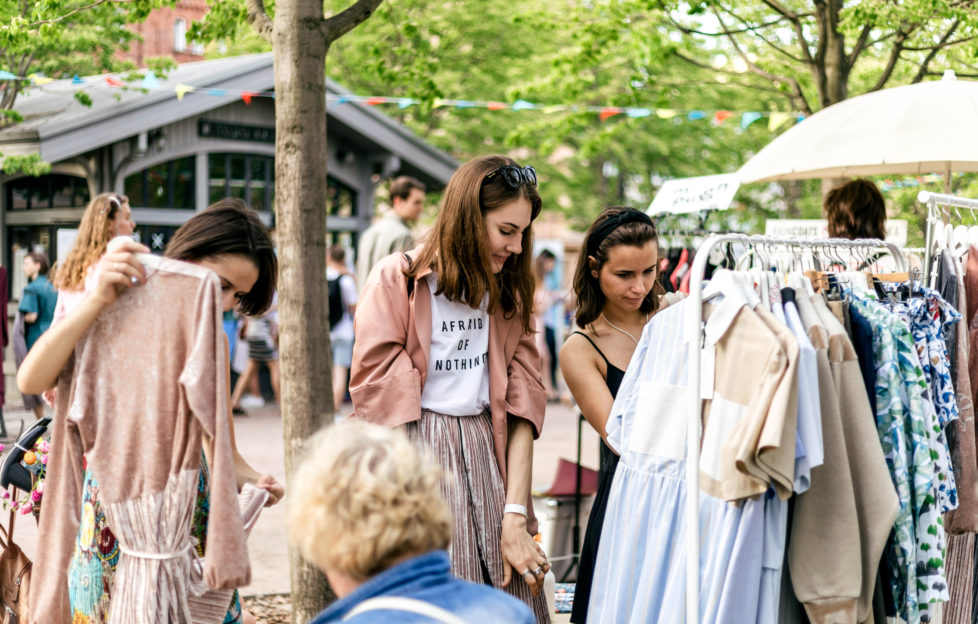Can Fast Fashion Be More Sustainable?

By definition, fast fashion is ‘the reproduction of highly fashionable clothes at high speed and low cost’ and is something we’re encouraged to avoid if we want to do our bit for the planet. But is there a way to make fast fashion a little more sustainable? Here are a few thoughts that ethical cleaning company Bio-D has had on how to make this happen:
Swishing
We all know about buying from and donating to charity shops, but have you heard of Swishing? Put simply, Swishing is swapping items of clothing with friends. Which saves the planet and money. And if you ever change your mind, you can always borrow it again from your friend – what’s not to love? Similar to clothing swaps, some towns also host Swishing events so you have a larger range to choose from. Team Swishing with charity shop buys and you’re living your best sustainable fashion life.
Stop Microfibres
Microfibres are tiny pieces of plastic that break off from our clothes and make their way into water systems through the water in washing machines. Produced from materials often found in fast fashion; including polyester, nylon and acrylic, they are incredibly bad for the environment and have been found in the stomachs of a staggering number of sea creatures.
A number of potentially harmful chemicals also make their way into water systems through our washing machines, from everyday household laundry detergents. Buying an environmentally product (such as Bio-D), alongside microfibre limiting (try Guppyfriend) wash bags creates an eco-friendly washing cycle.
Choose Sustainable Materials
To save yourself from the problem of microfibres altogether, make sure to check the material that garments are made from. Some are worse than others, but being aware of the impact of different materials can help you decide whether you really want something or not.
Fabrics that shed microfibres include: Polyester, Viscose, Nylon, Rayon, Fleece, Elastane, Acetate
Instead go for natural fabrics like: Cotton, Flax, Linen, Silk
Brand Credentials
If you’re looking at buying fast fashion, it’s worth taking a look at a brand’s eco credentials website before filling your basket. Check the bottom of their website – if they’re not shouting about them front and centre, which perhaps they should be, this is where you will find any eco-initiatives they are involved with. The visibility of these can be an indicator as to how serious they take them!
Take Care
Of course, one of the best ways to be sustainable is the take care of your clothes. Making sure to follow care labels to a T and washing clothes inside out are just a couple of ways to help them look their best for longer. Storing clothes the right way is important – for example making sure to fold knits rather than hanging so to avoid stretching. And don’t underestimate the power of a good old needle and thread to fix holes and rips!
Try Renting
H&M recently made the news after launching a rental programme at their flagship store for shoppers in Sweden. Designed to combat the effects of fast fashion, the service will allow customers who subscribe to rent clothes for 30 days, after which point, they must be returned or purchased. If successful, they will consider expanding this internationally.
H&M is following in the footsteps of brands including Urban Outfitters and Banana Republic, who have also trialled similar renting schemes in the past, so may be worth considering if brought to the UK market.




